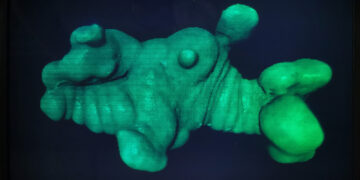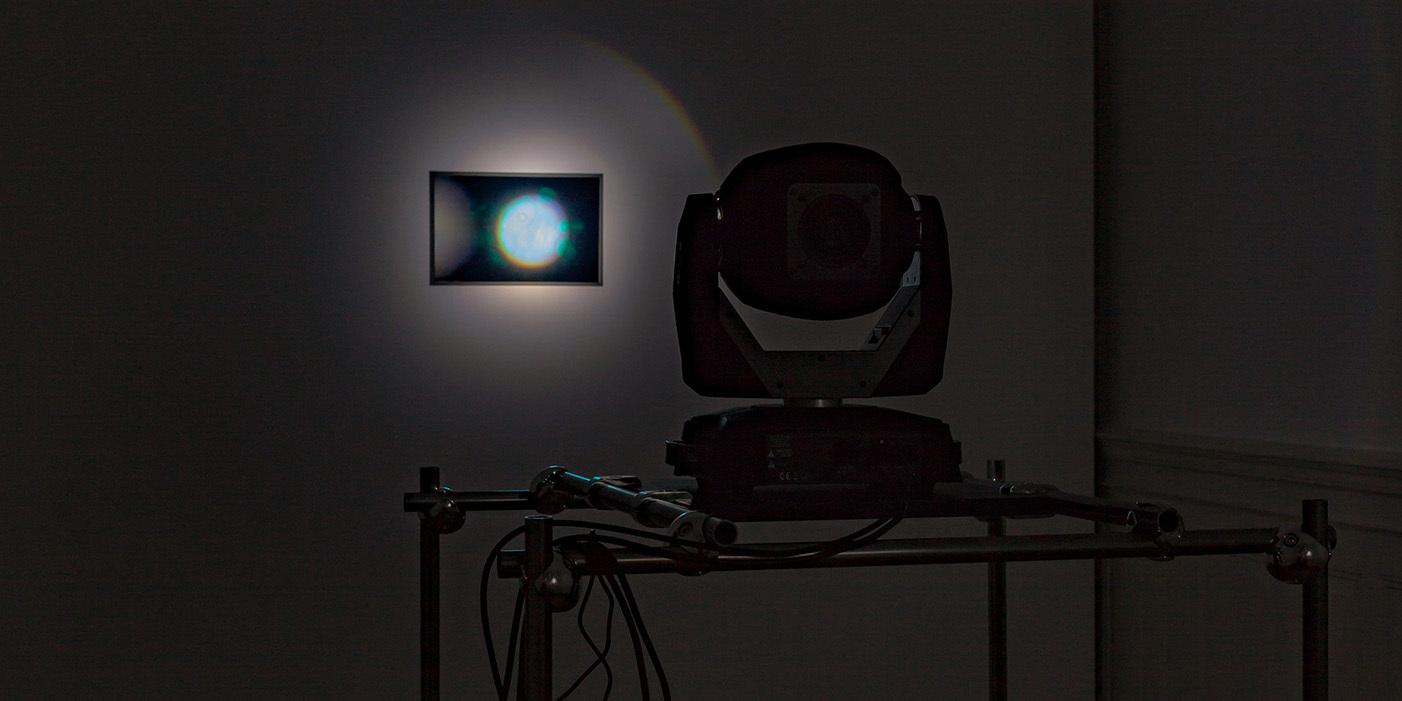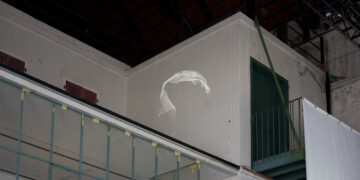Alan Bogana
La Gogotta Desnuda

Alan Bogana’s digital hologram La Gogotta Desnuda (2015) features a 3D scan of a Gogotte mineral from the Musée de mineralogy in Paris, shown in a darkened exhibition room where an LED spotlight slowly explores the image. The viewer’s attention is drawn to flesh-coloured organic volume conglomerates emerging from the image space, which initially call to mind bulges of flesh or internal organs. Here, Bogana unmasks our anthropocentrism and how humans always serve as our central reference point in our perception of the world. Although we see dead rock, its biomorphic forms tempt us to interpret it as something living. The title, which could translate as the naked or unclothed gogotta, already alludes to this.
Gogottes are rare minerals consisting of tiny quartz crystals and calcium carbonate. Their remarkable sculptural forms result from a direct transformation of the movement of water washing into an underground sand pit, which is captured in the hardening sand. The way these rocks embody the invisible, the movement of flowing of the water, and analogously translate it into stone, without technical aids, is where Bogana’s fascination lies, and which he picks up in his work.
Grasping the rock’s whole biomorphic form requires viewers to assemble the various sections in their minds. This stands in stark contrast to the larger than life precision and physical presence of the image, which seems to promise complete clarity about what is being depicted. The holographic representation itself is a digital reconstruction using light waves. More precisely, it is based on an interference pattern of two light waves, from the meeting of the object wave, in this case that of the mineral, with a known reference wave. Like the depicted mineral, it renders something normally invisible to the human eye visible.
(Text: Bettina Back)




